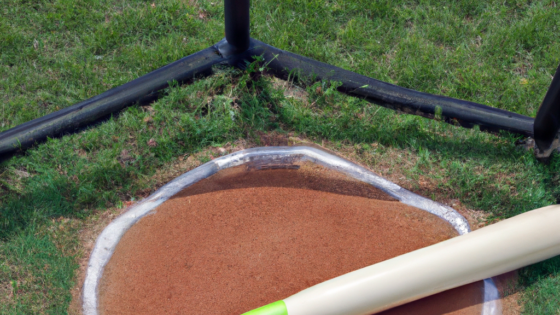Importance of Strength Training
How to Train for Baseball: Tips from Professional Players
Baseball is a physically demanding sport that requires a combination of strength, speed, agility, and endurance. To excel in this sport, players need to follow a disciplined training regimen that focuses on improving their overall physical fitness. One crucial aspect of any baseball training program is strength training. In this blog post, we’ll look at why strength training is essential and provide tips from professional baseball players on how to incorporate it into your training routine.
Importance of Strength Training for Baseball Players
Strength training is essential for baseball players for several reasons. Firstly, it helps players build muscle mass, which increases their strength and power, allowing them to swing the bat harder and throw the ball further. Secondly, it helps prevent injuries by improving the player’s balance and stability, which reduces the risk of falls or strained muscles. Lastly, strength training helps baseball players maintain their energy levels throughout a game, preventing them from getting tired quickly and impacting their performance.
Tips from Professional Baseball Players on Strength Training
To get the maximum benefit from strength training, baseball players need to follow a structured approach with the right exercises and techniques. Let’s take a look at some tips from professional baseball players on how to incorporate strength training into your workout routine:
1. Focus on Compound Exercises
Compound exercises are those that work multiple muscle groups at the same time. These exercises are perfect for baseball players as they help target the entire body, improving overall strength and coordination. Some great compound exercises to include in your workout routine are squats, deadlifts, bench press, and pull-ups.
2. Train Both Upper and Lower Body
Many baseball players tend to ignore their lower body when it comes to strength training. However, strong legs and core are essential for generating the power needed for hitting and throwing. Therefore, make sure to include exercises that target your lower body, such as lunges, leg press, and calf raises.
3. Include Stretching and Mobility Exercises
Stretching and mobility exercises are vital for baseball players as they help improve flexibility and range of motion, reducing the risk of injuries. Include a few minutes of stretching and mobility exercises before and after your workout. Some great stretching exercises include the butterfly stretch, hip flexor stretch, and hamstring stretch.
In conclusion, strength training is an essential aspect of any baseball training program. By following the tips shared by professional baseball players, you can incorporate strength training into your workout routine and take your performance to the next level. Remember to consult with your coach or a fitness expert before starting a new exercise regimen to ensure you’re doing the exercises correctly and safely.
Tips for Improving Batting
Section 2: Tips for Improving Batting
Batting is one of the most crucial aspects of baseball. It is what separates the good players from the great ones. To improve your batting skills, you have to train hard and focus on the fundamentals. Here are some tips from professional players to help you train for baseball and improve your batting:
1. Work on Your Technique
The first step to improving your batting is to perfect your technique. Your swing should be smooth and consistent, and you should be able to hit the ball with maximum power and accuracy. To improve your technique, start by analyzing your swing and identifying any flaws. Then, work with your coach or a batting mentor to address those flaws and develop a solid technique.
2. Practice with Different Pitches
One of the challenges of batting is being able to hit different pitches. To improve your skills in this area, practice with different types of pitches, including curveballs, fastballs, and sliders. This will help you develop your reaction time and improve your overall batting performance.
3. Strengthen Your Core
Your core is critical for generating power and maintaining balance when batting. To improve your core strength, focus on exercises that target your abs, obliques, and lower back. This will not only help you hit the ball harder but also protect you from injuries.
4. Improve Your Vision
Having good vision is essential for success in batting. To improve your visual acuity, practice focusing on the ball as it comes towards you. You can do this by using a batting tee or having a partner throw pitches to you. Additionally, try doing eye exercises such as following a moving object or reading small text from a distance.
5. Get Plenty of Rest
Finally, don’t underestimate the importance of rest. Your body needs time to recover and repair after a training session. Make sure you are getting enough sleep and taking rest days to avoid burnout and injury.
In conclusion, by focusing on the fundamentals and incorporating these tips into your training routine, you can improve your batting skills and become a better baseball player. With dedication and hard work, you can achieve your goals and succeed on the field.
Strategies for Pitching Development
Welcome back to our series on Strategies for Pitching Development! In this section, we’ll be discussing some tips from professional baseball players on how to train for the sport.
Baseball is a physically demanding sport that requires a lot of training to excel at. While there’s no one-size-fits-all approach to training for baseball, there are certainly some tips that can help you get the most out of your practice sessions.
Let’s take a closer look at some advice from professional baseball players on how to train for the sport:
1. Focus on fundamentals
One of the most important aspects of training for baseball is focusing on the fundamentals. This means working on your mechanics, footwork, and other basic skills that are essential to the game. Many professional players emphasize the importance of mastering the basics before moving on to more advanced drills and techniques.
2. Consistency is key
Another important tip for training in baseball is to be consistent. This means practicing regularly, even when you don’t feel like it. Consistent practice helps build muscle memory and develop the habits that will make you a successful player.
3. Use a variety of drills
To train effectively in baseball, it’s important to use a variety of drills. Different drills can help improve your strength, speed, agility, and other crucial skills. Some popular drills in baseball include throwing drills, hitting drills, and base running drills.
4. Work with a coach or teammate
Working with a coach or teammate can be a great way to improve your skills and stay motivated. A coach or teammate can provide feedback on your technique and offer support and encouragement during practice sessions.
5. Set specific goals
When training for baseball, it’s essential to set specific goals for yourself. These goals can help you stay focused and motivated, and give you something to work towards. Some examples of goals might include hitting a certain number of home runs, lowering your ERA, or improving your fielding percentage.
Overall, there are many different strategies for training in baseball. By focusing on the fundamentals, being consistent, using a variety of drills, working with others, and setting specific goals, you can work towards becoming a successful player. Keep these tips in mind as you continue to develop your skills and strive for success on the field!
Conditioning and Endurance Techniques
Section 4: Conditioning and Endurance Techniques
Baseball requires a mix of power, speed, and endurance. To excel at the game, players need to have the stamina to play for long periods, run around the field, and hit the ball with precision. Here are some conditioning and endurance techniques that professional players use to train for baseball.
1. Interval Training: Baseball games are not continuous sprints; they are a series of short bursts of activity interspersed with brief periods of rest. Interval training mimics the demands of baseball by combining short bursts of intense activity with recovery periods. This type of conditioning improves endurance, power, and speed simultaneously.
2. Cardiovascular Exercises: Baseball involves running, jumping, and throwing, all of which require cardiovascular endurance. To improve cardio fitness, players can engage in activities like running, cycling, swimming, or rowing. These exercises help increase lung capacity and enhance overall endurance.
3. Plyometrics: This type of training focuses on explosive jumps, hops, and bounds. Plyometric exercises help develop power, speed, and agility, all of which are crucial in baseball. Some common plyometric exercises for baseball players include jump squats, bounding, and box jumps.
4. Resistance Training: Strength training is essential for baseball players, as it helps to improve power, speed, and muscular endurance. Resistance training should involve exercises that target the major muscle groups used in baseball, like the shoulders, arms, core, and legs. Some examples of resistance training exercises for baseball players include bench press, deadlift, squats, and pull-ups.
5. Agility Drills: Baseball involves a lot of quick movements, changes of direction, and rapid acceleration. Agility drills help players develop fast footwork, coordination, and reaction times. Some common agility drills used by baseball players include cone drills, ladder drills, and shuttle runs.
6. Stretching: Flexibility is an essential aspect of conditioning for baseball players. Improving flexibility can help players move more efficiently, reduce the risk of injury, and improve overall performance. Stretching should be incorporated into every training session and should focus on the muscle groups most used in baseball.
Wrapping Up
Training for baseball requires a combination of conditioning and endurance techniques. Professional players use a range of exercises and drills to improve their stamina, speed, power, and agility. By incorporating these techniques into your training regimen, you can improve your overall performance and take your game to the next level.
Mental Preparation for Baseball Success
How to Train for Baseball: Tips from Professional Players
Section 5: Mental Preparation for Baseball Success
Baseball is a mental game just as much as it is a physical one. Successful players are not only physically prepared but also mentally prepared. Here are some tips from professional players on how to train for baseball mentally.
1. Visualize Success
Visualization is a powerful tool that can help athletes prepare mentally for game situations. Professional players use visualization to see themselves making successful plays, hitting home runs, and throwing strikes. Imagine yourself making the perfect catch, hitting the game-winning RBI, or throwing a flawless pitch. Picture yourself carrying out the desired outcome, and focus on the feeling of having already achieved it.
2. Focus on the Process
Baseball players need to have a short memory and focus on the process instead of the outcome. It’s essential to learn from mistakes and move on. Remember that every play counts, so focus on each individual play rather than the game’s outcome. Control what you can control and focus on your performance throughout the game.
3. Stay Confident
Baseball is a game of failure, and players should expect to fail often. However, successful players learn to maintain their confidence, and they don’t let a mistake affect their next play. Focus on the positive aspects of your game, and stay confident throughout the game.
4. Develop a Routine
Developing a routine before each game can help players stay focused and mentally prepared. This routine may include stretching, visualization, and breathing exercises. Having a routine not only helps players feel more in control but also helps them prepare mentally for each game.
5. Control Your Emotions
Baseball is an emotional game, and players need to learn to control their emotions. It’s normal to feel upset or frustrated after a missed play, but successful players know how to refocus their emotions positively. Take a deep breath, refocus, and move on. A calm mind leads to a better performance and can help you better focus on the task at hand.
In summary, training for baseball success requires both physical and mental preparation. Professional players know that training mentally is as important as training physically. By visualizing success, focusing on the process, staying confident, developing a routine, and controlling your emotions, you too can become a better player. So next time you hit the field, remember to focus on your mental game as well as your physical game.





